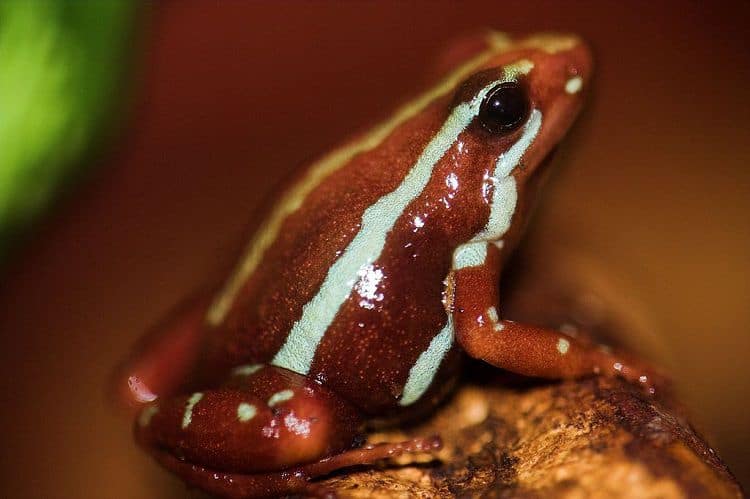Table of Contents
Although some creatures, such as chameleons, are well known for changing color to mimic their surroundings, when it comes to frogs, this is not a well-known phenomenon. However, there are some frog species that can and do change color, depending on circumstance. Some will change their color in response to prevailing factors such as temperature, brightness, and moisture in the air. For others, a change in color could indicate a problem.
Why Did My Frog Change Color?
If you have noticed your frog has changed color, it could indicate that it is adapting to new surroundings. Then again, it could also be caused by illness. Tree frogs, for example, can develop discoloration when affected by various diseases. Red-leg is a common disease for tree frogs and, as the name suggests, causes the frog’s legs to turn a reddish color.
Be cognizant of your frog’s natural coloring as some already have red pigment on their legs. The important thing is being able to spot any obvious color changes as and when these occur. If your frog is ill, you are likely to notice other symptoms as well as the discoloration, such as lethargy, skin dryness, loss of appetite, and bloating.
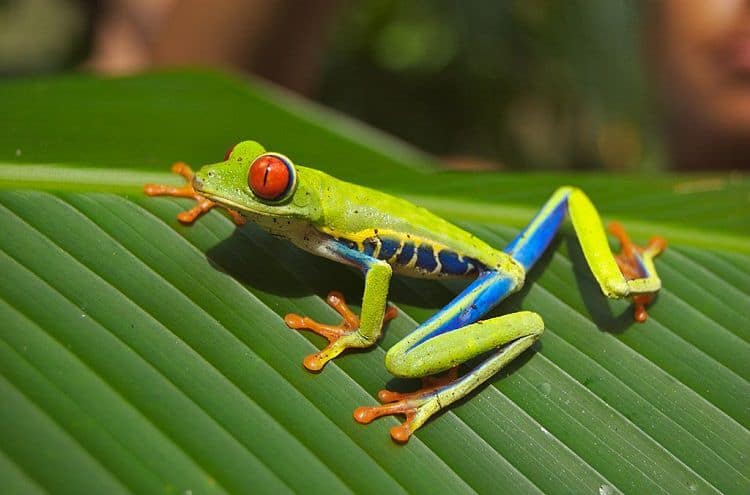
Red-Eyed Tree Frog 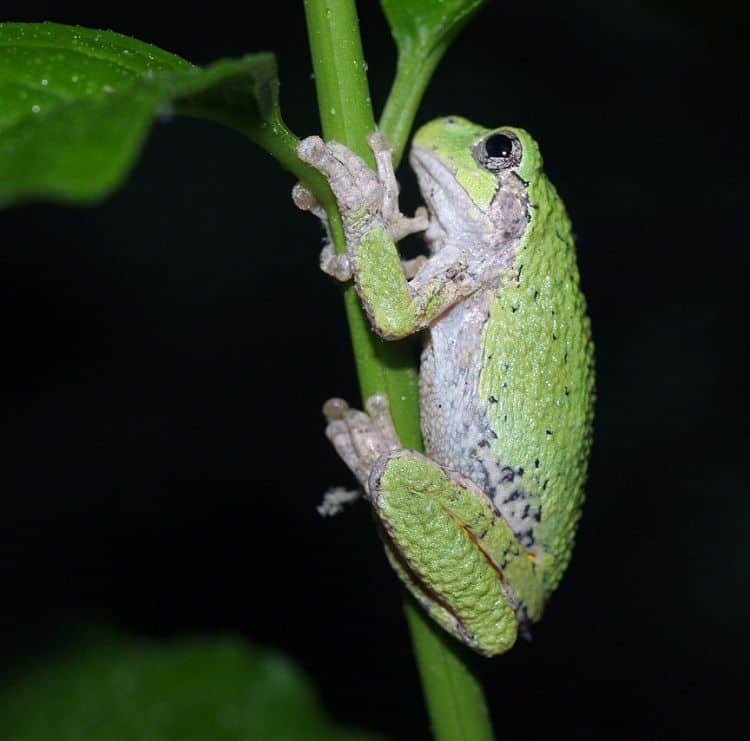
Gray Tree Frog 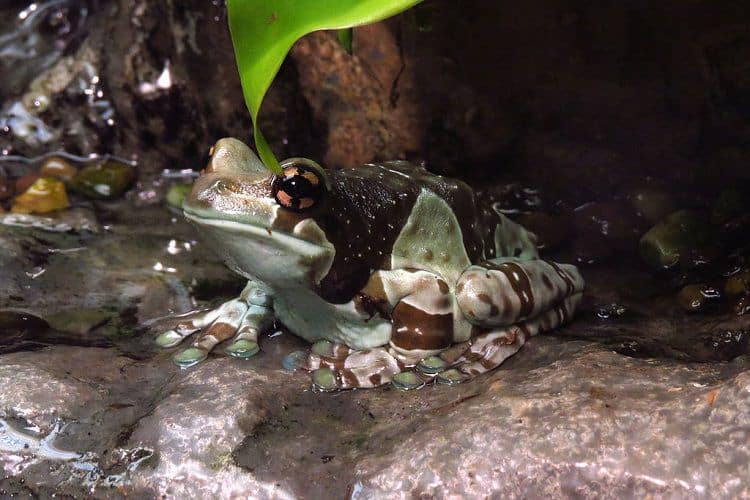
Amazon Milk Frog
Why Is My Frog Turning Brown?
Not all color changes in frogs indicate a problem . In fact, certain species of frog will change their color for various reasons. Researchers at a tiger reserve in Arunachal Pradesh, India were surprised to witness a giant green tree frog change color from green to brown and then back to green again within a short amount of time (minutes) [source].
. In fact, certain species of frog will change their color for various reasons. Researchers at a tiger reserve in Arunachal Pradesh, India were surprised to witness a giant green tree frog change color from green to brown and then back to green again within a short amount of time (minutes) [source].
The frog was placed onto a brown-colored tree trunk by the researchers, who then saw the creature change color rather rapidly, which they were not expecting. The team already knew that some species of frog change color during mating, but they believed that the color change in this particular situation was a reaction to the change in environment, ultimately caused by physiological stress or the triggering of a predator deterrence response.
White tree frogs are typically greenish in color, but some change to brown when hiding from danger.
Why Is My Frog Turning White?
A frog that has white or grey bumps on its skin may have picked up herpes, which is a disease common in frogs. As a fungal infection, herpes can cause small white patches on the frog’s skin. In some cases, there will be one large white spot, which will appear to be growing.
If you notice that your frog seems to be turning white, it could be the result of a fungal infection. It might help to obtain antifungal medication (see a specialist vet) as the infection can be uncomfortable for the frog. You may notice, for example, that it is fussy with eating and is trying to scratch off the white patches by rubbing up against plants or decorations in the tank.
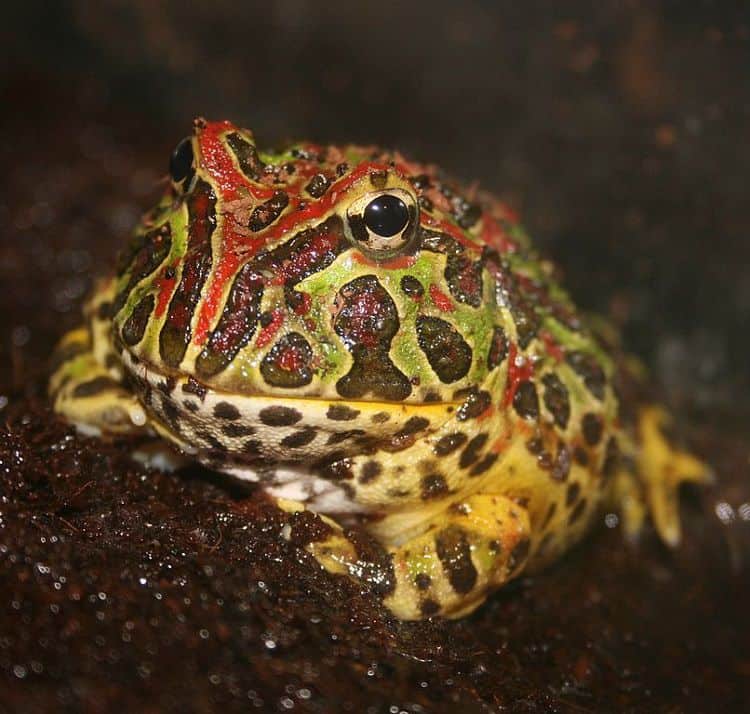
Argentine Horned Frog 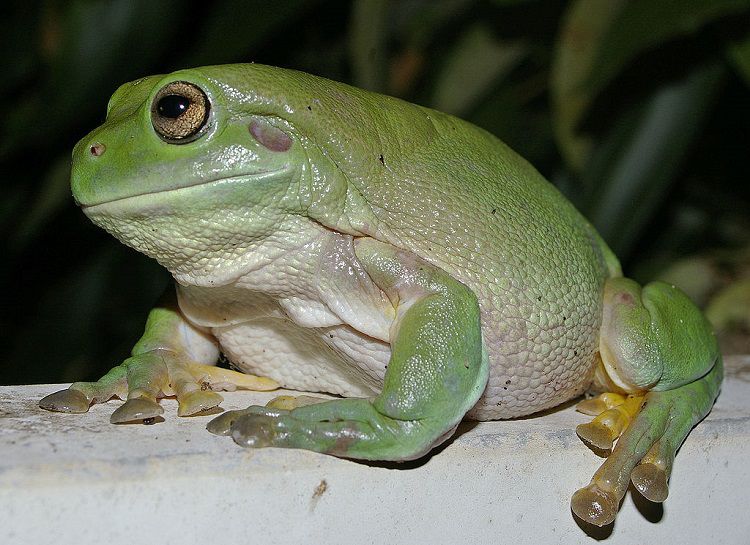
White’s Tree Frog 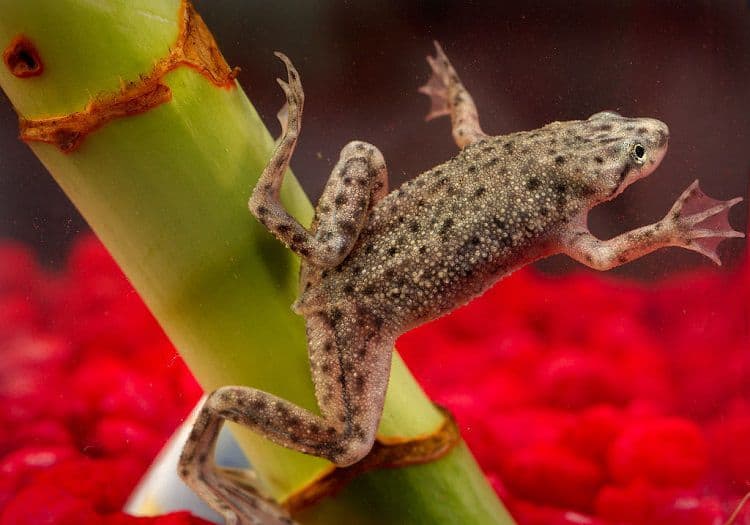
African Dwarf Frog
Why Do Frogs Turn Black?
Some frogs can turn a very dark shade, almost black-like in appearance, which can be a major cause of concern for owners. This change in color is often caused by a change in light, temperature, or humidity. However, in some instances frogs turn a black color when they are ill and/or dying.
If your frog has turned black, it is only natural to be worried. In this situation it would be a good idea to check your tank for a change in temperature or humidity. You should also consider changing the water as there could be bacteria present, which could be causing infection.
If your frog has changed color but continues to eat and act normally, it is likely that the color change is nothing to worry about. However, if you notice other signs of illness such as lethargy, loss of appetite, or bloating, visit a vet and have the animal checked out.
Photo Credits:
- Featured Image (Phantasmal Poison Frog): Deepinon at https://www.flickr.com/photos/deepinon/110593290/
 – This file is licensed under the Creative Commons
– This file is licensed under the Creative Commons Attribution 2.0 Generic
Attribution 2.0 Generic license.
license. - Argentine Horned Frog: Melanie Mae Bryan – This file is licensed under the Creative Commons
 Attribution 2.0 Generic
Attribution 2.0 Generic license.
license. - Gray Tree Frog: Robert A. Coggeshall – public domain
- Red-Eyed Tree Frog: Careyjamesbalboa
 (Eric De Vries) – public domain
(Eric De Vries) – public domain - White’s Tree Frog: Bidgee
 – This file is licensed under the Creative Commons
– This file is licensed under the Creative Commons Attribution 3.0 Unported
Attribution 3.0 Unported license.
license. - African Dwarf Frog: https://phil.cdc.gov/details.aspx?pid=11835
 – public domain
– public domain - Amazon Milk Frog: D. Gordon E. Robertson
 – This file is licensed under the Creative Commons
– This file is licensed under the Creative Commons Attribution-Share Alike 3.0 Unported
Attribution-Share Alike 3.0 Unported license.
license.

